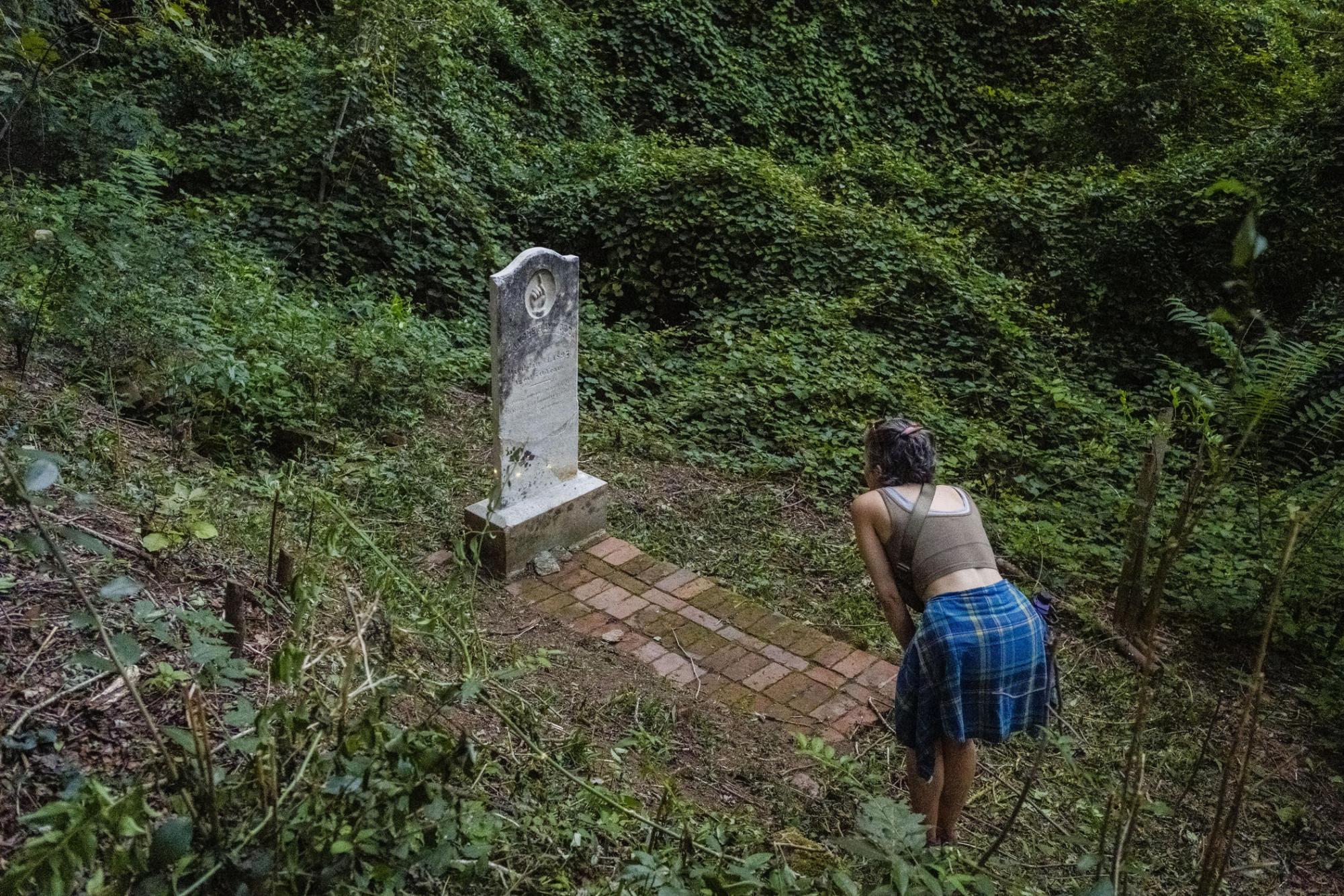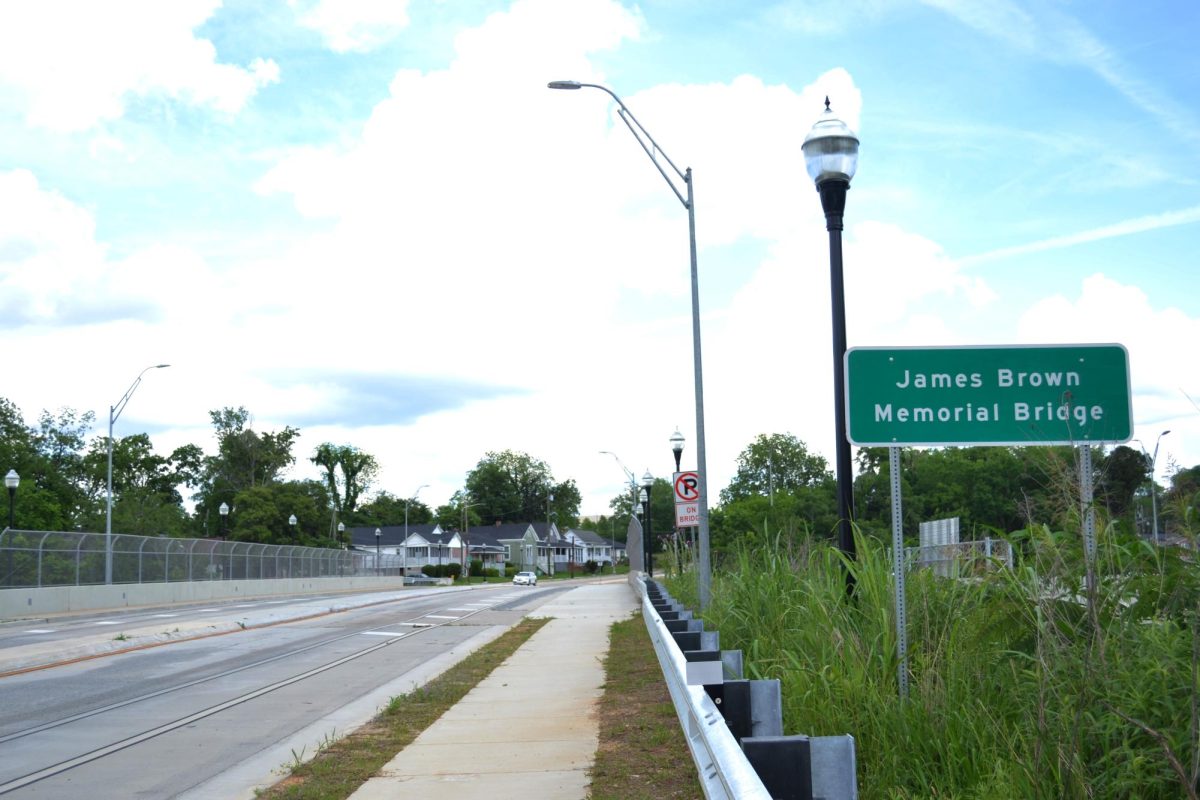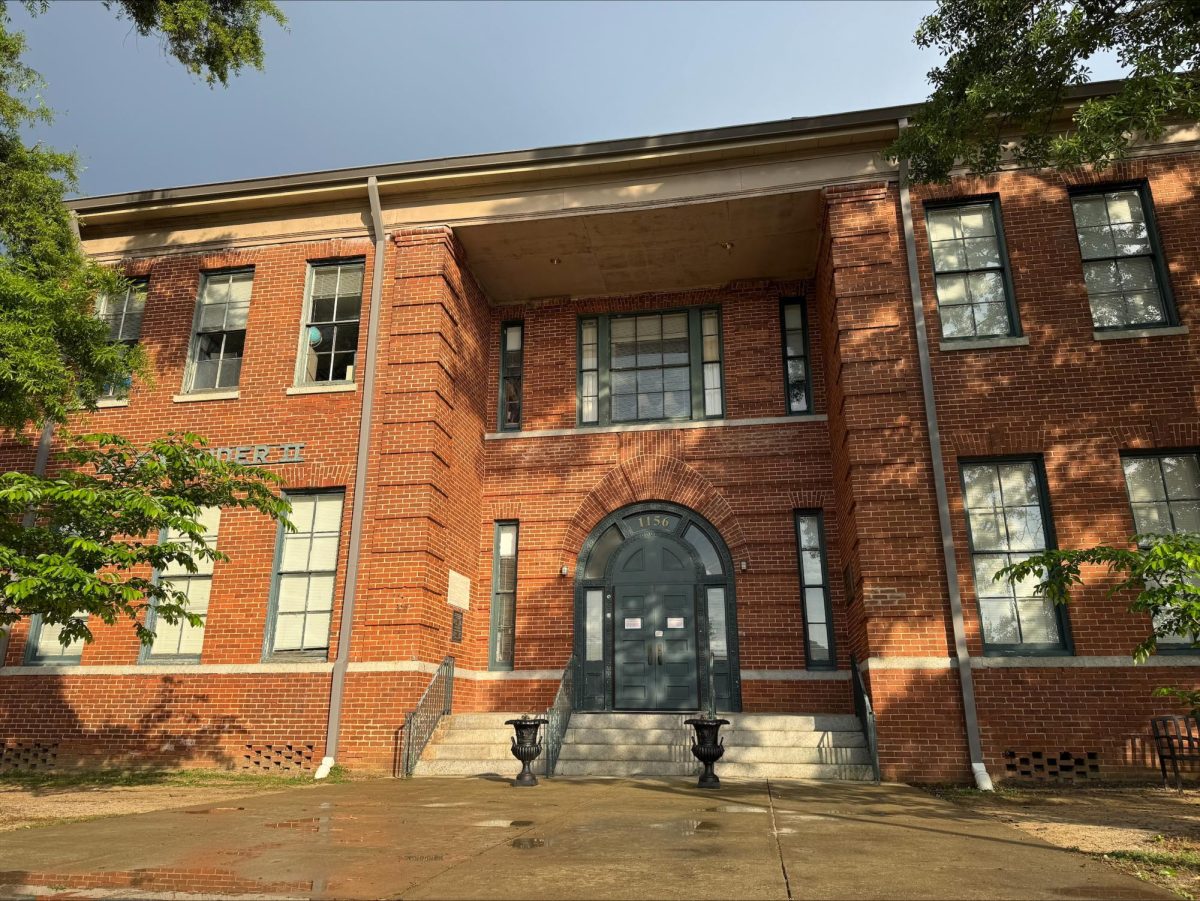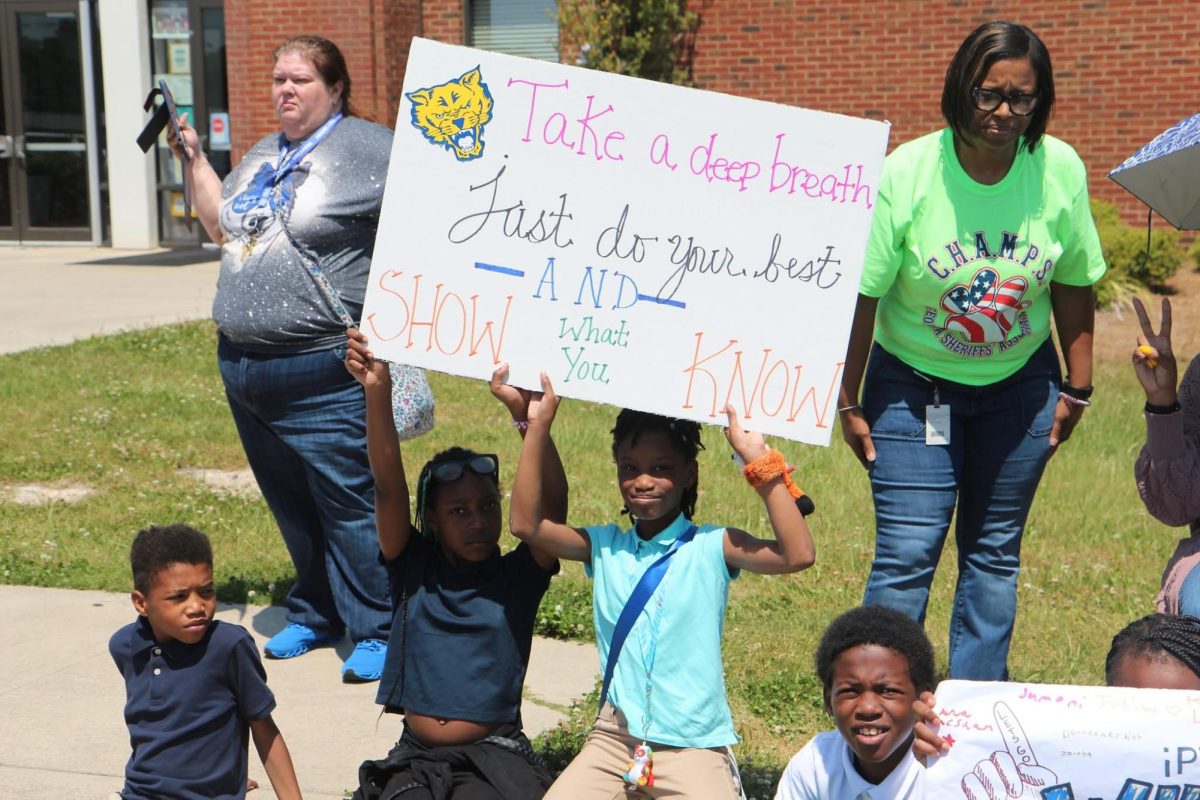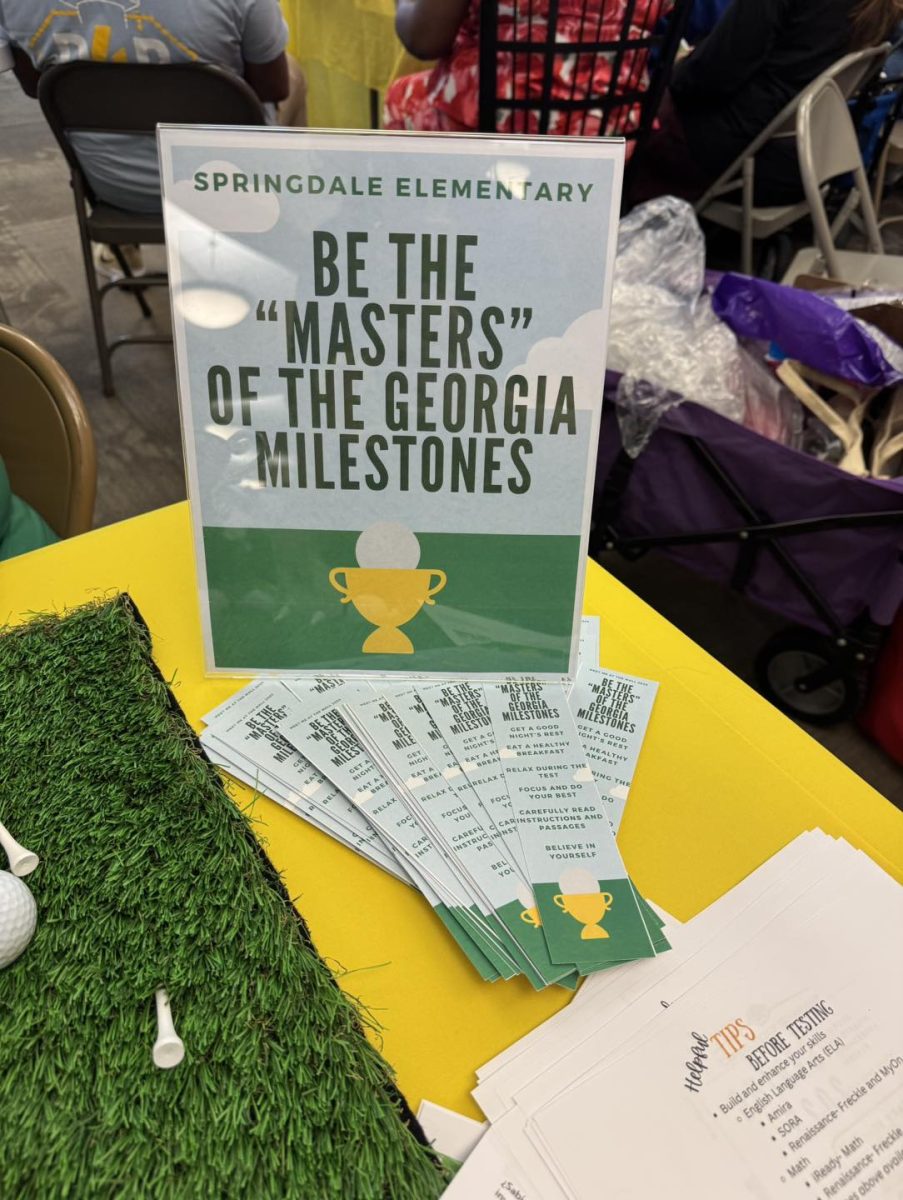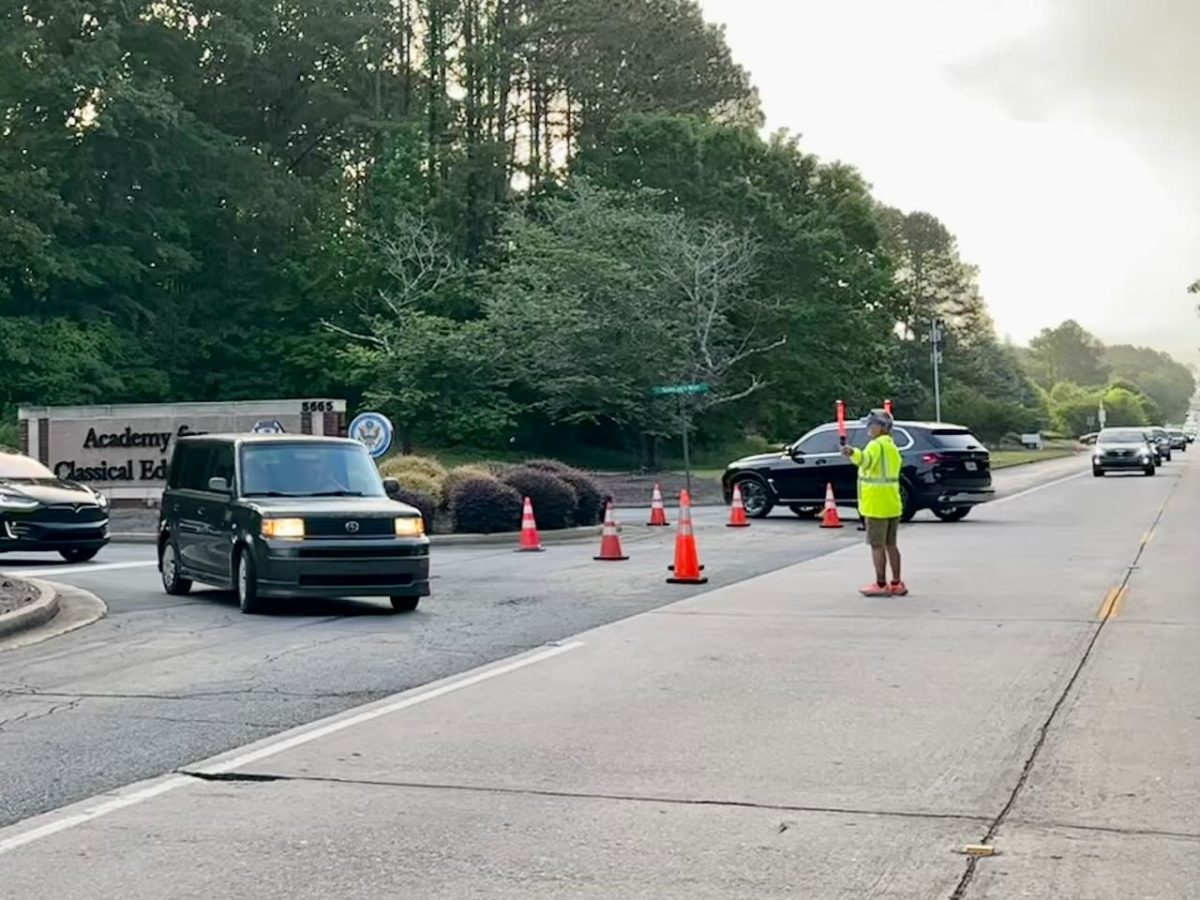As the sun set and the afternoon light turned gold in Macon, Ga., volunteer tour leader, former river outfitter and general community presence Kathleen O’Neal grabbed her bullhorn and rallied the troops.
“We’re actually starting—” O’Neal said before a squawk of feedback slowed her down.
“We’re going to start, actually, by the Hutchings and the Sheftalls,” she directed, leading dozens of tour takers to the grave plots of two of Macon’s most prominent Black families.
The Hutchings and the Sheftalls served as educators and business people in this area for generations. These are names that many in this Saturday evening tour of Macon’s Oak Ridge, an African American cemetery, already knew quite well.
For instance, take Waldo Sheftall, who only died in 2007. A lifelong historic preservationist by avocation, when he died at 53 he was active in the upkeep of nearby Linwood Cemetery where U.S. Rep. Jefferson Franklin Long, the first Black person to speak on the floor of the U.S. House, is buried.
Sheftall also worked to preserve Oak Ridge Cemetery, where today Sheftall lies at rest and where the people within earshot of O’Neal’s megaphone had come tonight to learn.
O’Neal spent some time at the monuments at the top of the ridge in the hilly cemetery before moving on to another name and then on to a subject that was, until recently, mostly unknown about Oak Ridge.
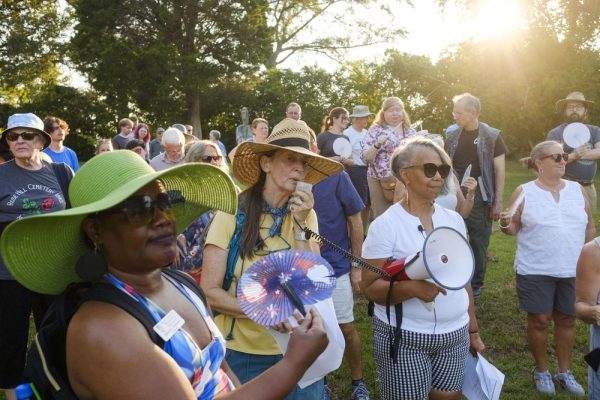
“Right behind us over there is Miss Eady Beecher,” O’Neal said.
Eady Beecher’s grave is so small, O’Neal said, that at first she thought Eady must have died as a child. But her tombstone belies that idea.
“Born in Virginia in 1799. Sold to ST Beecher. Milledgeville, Georgia, 1811,” O’Neal read.
Eady Beecher was Black and enslaved by Samuel Beecher, who owned the States Rights Hotel in Milledgeville, Ga. Census records suggest Eady was the mother of at least eight of Samuel’s children.
“This may be why Samuel Beecher is listed on Eady’s tombstone,” O’Neal continued. “The newspaper article says that she had estimated 120 descendants at the time of her death.”
Amazingly, when Eady Beecher died at 103 years old just after the turn of the 20th century, it was not age that killed her but a house fire.
“I’m going to be passing this off to Joey, wherever he is, in a minute to talk a little bit about what you’re going to see as we go down through,” O’Neal said.
Looking downhill and to the right from Beecher’s grave, tour members saw the rows and rows of monuments of Rose Hill Cemetery.
Rose Hill is dense with history. There you’ll find a historically Catholic section and more than one Jewish section where visitors still place stones atop headstones in remembrance. By the Ocmulgee River, ranks and ranks of gray tombstones belonging to 600 Confederate veterans lie below a huge Bonnie Blue Flag of the Confederacy. By the railroad tracks, the graves of members of the Allman Brothers Band still draw hundreds annually.
To the left, beyond a treeline, is Riverside Cemetery, almost as resplendent.
But dead ahead to the naked eye, an expanse of green runs like a seam between Rose Hill and Riverside.
“It looks like you could graze horses or lambs here,” O’Neal said.
Later, after reading one of the smattering of Oak Ridge headstones, tour member Stephanie Wood Miller said believing in this emptiness has had consequences.
“When you erase places, you erase people and you erase history,” she said.
Oak Ridge Cemetery is one of an untold number of Black burial grounds lost to history through the generations. And here, as in many other similar spaces, preservationists have begun peeling back layers of willful neglect for the sake of correcting history.
Another such cemetery with Macon connections is Mercer University’s Penfield Cemetery.
And in the Oconee National Forest, north of Greensboro, between Atlanta and Augusta, the descendants of people whose graves are now part of the forest understory have been reclaiming history for years.
Restoring the history at Oak Ridge began years ago.
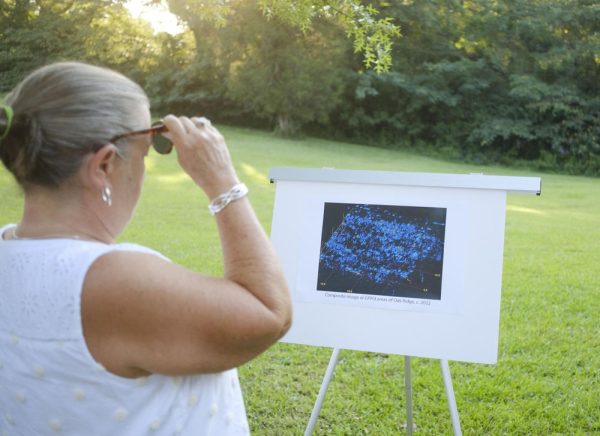
First, a long-sought historic marker at the top of the hill now lets people know: This anodyne hill is the resting place of many.
Then, last year, in cooperation with the nonprofit preservation organization Historic Macon, a Georgia State University archaeology graduate student named Quinn Connally began rediscovering the stories under the hill with technology called ground penetrating radar.
He started at the top, with graves like Eady Beecher’s.
“I went across some of the graves up there just to see, like in this soil type: What does it look like where I know somebody is buried in the ground?” Connally said.
And so after rolling over a few marked graves with what looks like a jogging stroller with a transponder strapped to the bottom of it, he had a baseline for what a radar-detected burial site looks like. Then, methodically, he scanned the rest of the cemetery.
Now, over a year later, Connally’s scanning has been rendered as a single image perched on a little easel nearby.
In the picture, blue waves thread through the ground under our feet. In spots, the blue pitched to a bright red. That’s a signal of particular intensity.
Joey Fernandez is a full-time preservationist at Rose Hill Cemetery. After Kathleen O’Neal handed him the megaphone, he explained what Connally’s waves mean.
“There’s a lot of people out here,” he began, simply. Then O’Neal prodded him for more.
“Thousands?” she asked.
“Thousands of people,” Fernandez said, alluding to the bodies buried under the expanse of the unmarked field. “It was one after another, basically, throughout this whole grassy area.”
Tour member Robert Foster III quickly asked the follow-up.
“And these were slaves?”
“It was the 1840s and on,” Fernandez said before trailing off.
Later, off to the side of the tour, he elaborated.
“I always say, ‘Where you see grass in here, there’s a person there,’” Fernandez said. “I mean, this was here from 1840. It’s full. They ran out of space.”
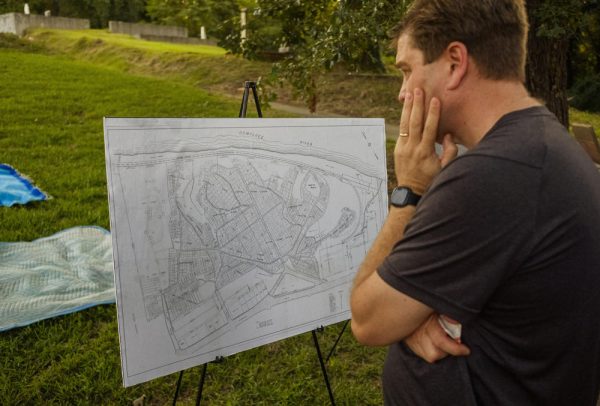
At the bottom of the hill were more easels, with maps. An 1879 map came close to the history of this space. It was full of graves. But just 75 years later, in a 1954 map, Oak Ridge, though still labeled, had more or less been erased. It was mostly white space.
The people buried here — the fact of them — had been nearly blotted out.
“You know, the thing is that it’s not unusual,” tour member Stephanie Woods Miller said.
There’s the Black cemetery in Clearwater, Fla., only partially moved to build a swimming pool in 1954. There’s Jacksonville’s historically African American Mount Herman Cemetery, made the site of a parking lot.
“It’s okay to be surprised,” Woods Miller said to others on the tour. “The most important thing is that you’re present. Every person who’s here gives these people a chance to be remembered.”
Joey Fernandez, the preservationist, sees the Oak Ridge effort as a path to healing in Macon.
“This is bringing the city together,” he said. “It’s uniting the city. Once we understand this, I think people will feel better about the city.”
The unmarked graves on the hill aren’t the only stories being told at Oak Ridge, either. As the local rare plant club peels back years of invasive plant growth at the cemetery’s edge, they are finding more tombstones and more names.
Volunteer researchers like Brenda Williams are diving into archives to see what there is to know about those names, like Blanche Haywood. Or James Douglass, who in the post-Reconstruction year of 1879 died with what in today’s money would be about $400,000 in the bank.
“This is just phenomenal,” Williams said. “Where are you getting money from?”
Williams said that’s just one of the stories emerging from the graves in the trees. And as Williams learns more, she and others are planning more guided tours of Oak Ridge.


